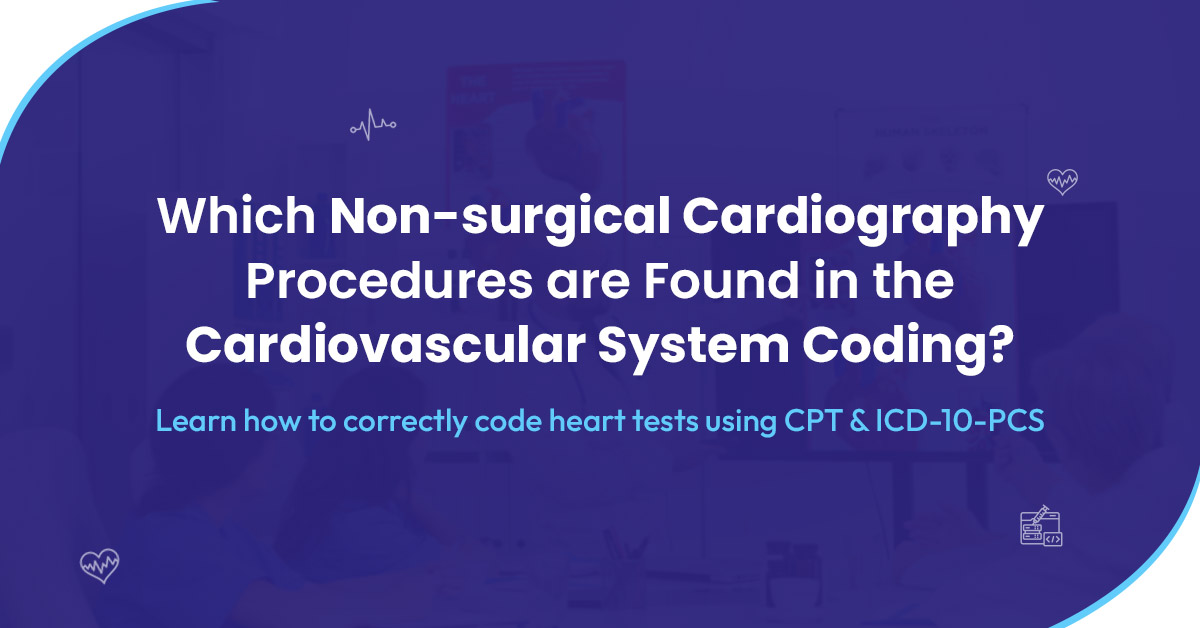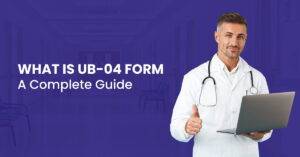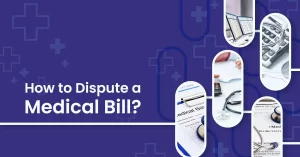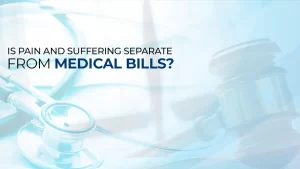Coding is tricky, right? Well obviously yes! Allow me to explain, do you know that a single misplaced decimal point in a medical code can be the difference between a claim getting paid and a hospital losing thousands of dollars?
Moving on, getting cardiography coding right is essential because it affects everything. Be it patient bills, insurance coverage or the overall quality of healthcare revenue cycle management.
What exactly is non-surgical cardiography?
It refers to heart-imaging or heart-monitoring tests done without an incision. These tests help doctors see how the heart is working without a surgical procedure. Furthermore, they lay a foundation in diagnosing or managing several heart conditions.
In this blog, we’ll go over some common non-surgical cardiography procedures you might see in cardiology system coding. Also, learning about these tests in advance makes coding easier and more accurate.
Before we dive into the non-invasive cardiology procedures, let’s have a quick look at the working of cardiology coding.
How Cardiology Coding Works?

Cardiology procedures are primarily coded using Current Procedural Terminology (CPT) codes in the U.S. Basically, these codes describe medical, surgical, and diagnostic services. And for international or inpatient coders, the ICD-10-PCS system may be used. But for most outpatient non-surgical cardiography, CPT is your go-to.
Non-Surgical Cardiography Procedures found in the Cardiovascular System Coding
| Procedure | Purpose | CPT Codes | ICD-10-PCS |
| Electrocardiogram (ECG/EKG) | Detect arrhythmias, ischemia, heart attacks | 93000, 93005, 93010 | 4A02X4Z |
| Holter Monitor | Detect intermittent arrhythmias over 24–48 hrs | 93224, 93225, 93226, 93227 | 4A02X4Z |
| Event Monitor (Loop Recorder) | Long-term rhythm monitoring via wearable/implant | 93268, 93270, 93271 | 4A02X4Z |
| Transthoracic Echocardiogram (TTE) | Evaluate heart valves, function, and structure | 93306, 93307, 93308 | B245ZZ3 |
| Stress Tests (Exercise or Pharmacologic) | Assess heart function during stress | 93015, 93016, 93017, 93018 | B245ZZ3 |
| Stress Echocardiography | Evaluate wall motion and perfusion under stress | 93350, 93351 | B245ZZ3 |
| Dobutamine Stress Echocardiography | Simulate exercise for patients unable to exercise | 93350, 93351 | B245ZZ3 |
| Cardiac CT for Calcium Scoring | Assess calcium buildup for CAD risk | 75571 | B210YZZ |
| Cardiac CT Angiography (CCTA) | Detect coronary blockages and heart defects | 75572, 75573, 75574 | B2101ZZ |
| Cardiac MRI | Visualize heart structure and function in detail | 75557, 75559, 75561, 75563, 75565 | B030ZZZ |
| Myocardial Perfusion Imaging (Nuclear Stress Test) | Measure blood flow to heart during stress/rest | 78451, 78452, 78453, 78454 | C220ZZZ |
Top Non-Surgical Cardiography Procedures & Common CPT Codes
Non-surgical cardiography procedures play a vital role in diagnosing and monitoring heart conditions. These tests are commonly used in cardiology practices, urgent care settings, and hospitals.
Furthermore, it’s important to know how to choose the correct CPT and ICD-10-PCS codes for these tests. Because using the right codes helps make sure that billing is accurate and insurance payments aren’t delayed.
Here is a list of the most common non-invasive heart tests, along with the codes used for outpatient (CPT) and inpatient (ICD-10-PCS) billing.
1). Electrocardiogram (ECG / EKG)

What it is: A quick, painless test that records the heart’s electrical activity using electrodes placed on the skin.
Why doctors order it: To detect arrhythmias, ischemia, and signs of a recent or ongoing heart attack.
CPT Codes:
- 93000 – Complete (includes both tracing and interpretation)
- 93005 – Tracing only
- 93010 – Interpretation only
ICD-10-PCS:
- 4A02X4Z – Monitoring of cardiac rhythm, external
2). Holter Monitor (24 to 48-Hour ECG)
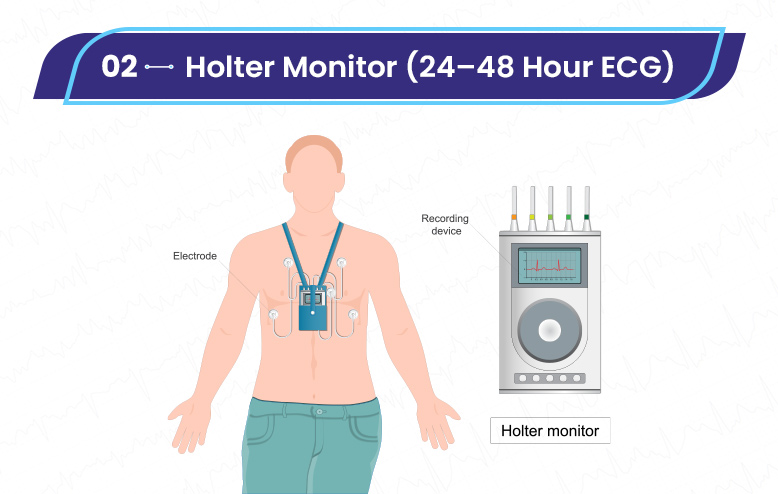
What it is: A portable device that continuously records heart rhythms for 24–48 hours.
Why doctors order it: To identify irregular heartbeats that may not appear during a standard ECG.
CPT Codes:
- 93224 – Full service (global)
- 93225 – Device hookup and patient instructions
- 93226 – Technical recording and monitoring
- 93227 – Final interpretation and report
ICD-10-PCS:
- 4A02X4Z – Monitoring of cardiac rhythm, external
3). Event Monitor (Loop Recorder)
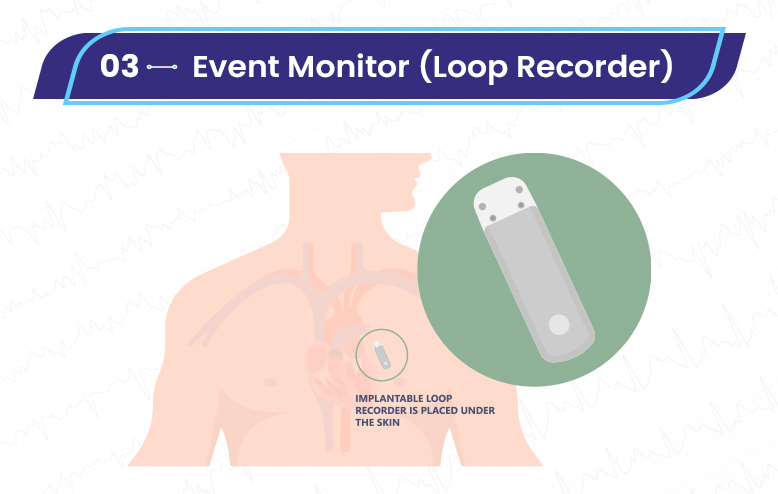
What it is: A wearable or implantable device that captures abnormal heart rhythms when activated by symptoms or automatically.
Why doctors order it: Used for long-term heart rhythm monitoring, especially in patients with fainting spells or dizziness.
CPT Codes:
- 93268 – External loop recorder (global)
- 93270 – Setup and education
- 93271 – Data recording and transmission
ICD-10-PCS:
- 4A02X4Z – Monitoring of cardiac rhythm, external
4). Transthoracic Echocardiogram (TTE)

What it is: A heart ultrasound using a probe on the chest wall.
Why doctors order it: To evaluate heart valves, muscle function, chamber size, and ejection fraction.
CPT Codes:
- 93306 – Complete echocardiogram with Doppler and color flow
- 93307 – Complete echocardiogram without Doppler
- 93308 – Limited or follow-up study
ICD-10-PCS:
- B245ZZ3 – Ultrasonography of heart, transthoracic, real-time
5). Stress Tests (Exercise or Pharmacologic)

What it is: Measures heart response to stress from exercise or medication.
Why doctors order it: To detect ischemia or reduced blood flow in patients with symptoms like chest pain or shortness of breath.
CPT Codes:
- 93015 – Complete stress test with supervision, interpretation, and report
- 93016 – Supervision only
- 93017 – Tracing only
- 93018 – Interpretation and report only
6). Stress Echocardiography

What it is: Combines exercise (treadmill or bicycle) with echocardiography imaging.
Why doctors order it: To evaluate blood flow and heart wall movement under stress conditions.
CPT Codes:
- 93350 – Echocardiographic imaging during stress
- 93351 – Full package: stress echo with supervision, interpretation, and report
ICD-10-PCS:
- B245ZZ3 – Transthoracic ultrasonography with stress (exercise or pharmacologic)
7). Dobutamine Stress Echocardiography
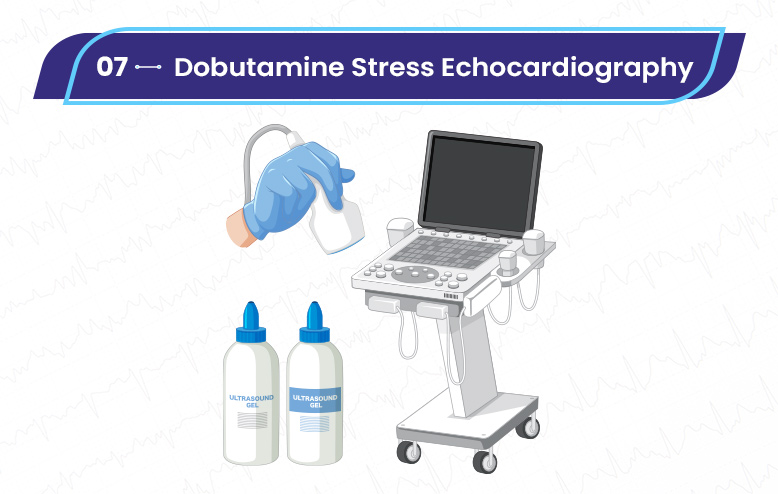
What it is: Uses the drug dobutamine to simulate exercise in patients who cannot physically exert themselves.
Why doctors order it: To assess cardiac function when exercise stress testing isn’t possible.
CPT Codes:
- 93350 – Stress echo imaging only
- 93351 – Stress echo with supervision and interpretation
ICD-10-PCS:
- B245ZZ3 – Real-time ultrasound of heart under pharmacologic stress
8). Cardiac CT for Calcium Scoring

What it is: A non-contrast CT scan that measures calcium buildup in coronary arteries.
Why doctors order it: Risk assessment for coronary artery disease in patients with no symptoms.
CPT Code:
- 75571 – CT scan of heart without contrast (calcium scoring)
ICD-10-PCS:
- B210YZZ – CT scan of heart without contrast
9). Cardiac CT Angiography (CCTA)
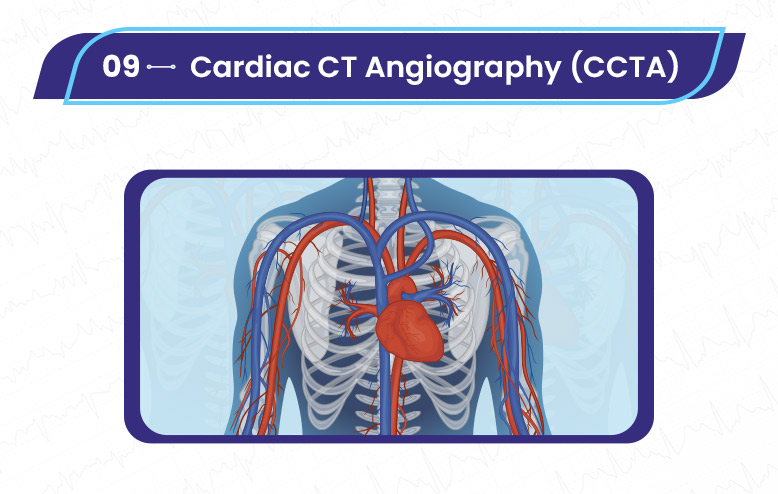
What it is: A CT scan with contrast that produces 3D images of coronary arteries.
Why doctors order it: Helps detect blockages, plaque buildup, or congenital heart defects.
CPT Codes:
- 75572 – CT with contrast for heart structure and function
- 75573 – CT with contrast for congenital heart disease
- 75574 – CT with contrast and 3D post-processing
ICD-10-PCS:
- B2101ZZ – CT scan of heart with contrast
10). Cardiac MRI
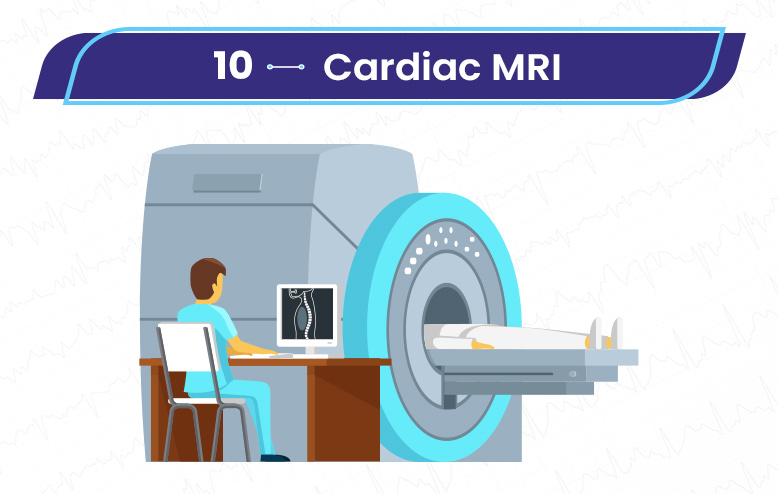
What it is: A magnetic resonance scan providing highly detailed imaging of the heart.
Why doctors order it: Detects scarring, structural abnormalities, cardiomyopathies, and congenital heart defects.
CPT Codes:
- 75557 – MRI of heart without contrast
- 75559 – MRI of heart with contrast
- 75561 – MRI of heart with and without contrast
- 75563 – MRI of heart with stress imaging
- 75565 – Cardiac MRI with flow mapping
ICD-10-PCS:
- B030ZZZ – MRI of heart
11). Myocardial Perfusion Imaging (Nuclear Stress Test)
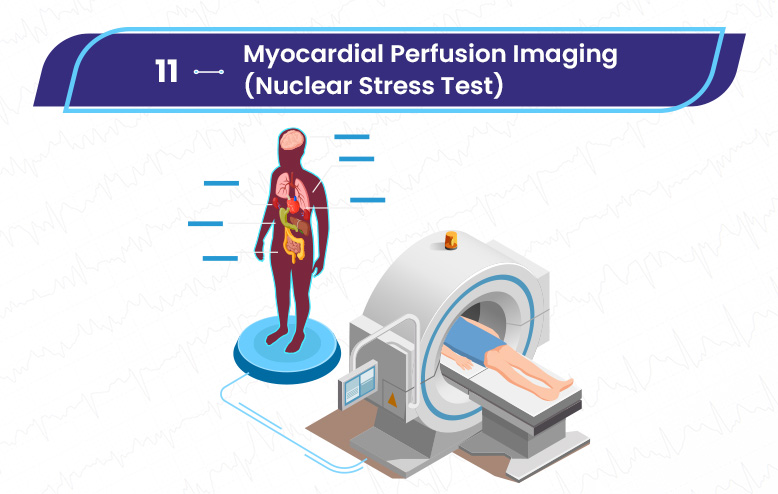
What it is: A nuclear medicine scan that shows how well blood flows to the heart muscle during rest and stress.
Why doctors order it: To diagnose coronary artery disease, especially in patients with chest pain or reduced exercise tolerance.
CPT Codes:
- 78451 – Single study at rest or stress
- 78452 – Multiple studies (rest and stress)
- 78453 – Planar imaging, single study
- 78454 – Planar imaging, multiple studies
ICD-10-PCS:
- C220ZZZ – Planar nuclear medicine imaging of heart
Common Mistakes in Cardiography Coding and How to Avoid Them
Let’s have a look at the top mistakes made when coding non-invasive cardiology procedures, along with the tips to avoid them:
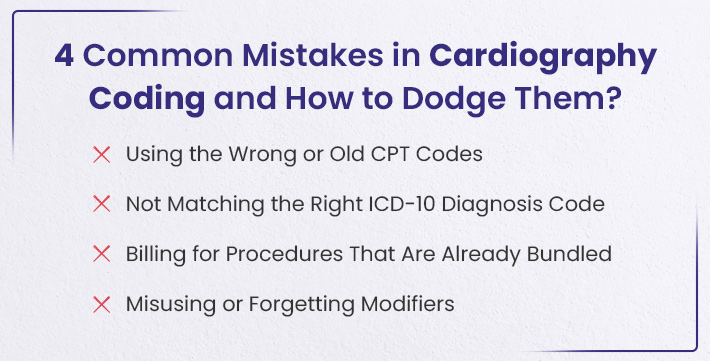
❌ Using the Wrong or Old CPT Codes
Many coders accidentally use CPT codes that are out of date or don’t match the actual service performed. For example, using a full-service (global) code when only the interpretation was done.
How to avoid?
First, always check that you’re using the latest CPT codes. Secondly, be clear on what part of the service was provided either just the test or just the reading, maybe even both. Also, use modifiers like -26 for the doctor’s interpretation or -TC for the testing part only.
Example: Use 93000 if the ECG test and interpretation are both done. Use 93010 with modifier -26 if only the doctor’s reading is billed.
❌ Not Matching the Right ICD-10 Diagnosis Code
Sometimes, the test is billed correctly, but it gets denied because the diagnosis code doesn’t explain why the test was needed. This often happens when coders use unclear or general diagnosis codes.
How to avoid?
Use specific ICD-10 codes that clearly show the test was medically necessary. Don’t just use general codes, check payer rules or tools like Medicare’s LCD/NCD lists to see which diagnoses are allowed for each test.
Tip: Create a quick-reference list of the most common ICD-10 codes used with each cardiology test.
❌ Billing for Procedures That Are Already Bundled
Some non-invasive tests are bundled together by insurance, meaning they are paid as one service. But, coders may bill them separately by mistake, which can lead to denials or audits.
How to avoid?
First of all, check the NCCI edits to see if two procedures are bundled. If they’re normally billed together, but in your case they were truly separate, you may need to use a modifier like -59. Also, make sure your documentation clearly supports this.
Example: If you bill an Echocardiogram and a Doppler together, you must show they were both needed and done for different reasons, not just part of a routine test.
❌ Misusing or Forgetting Modifiers
Modifiers help tell the full story of a service. For example, they explain whether only a part of it was done, or if it was separate from another procedure. Usually, many coders either forget to add the necessary modifiers or use the wrong ones. This can lead to underpayment, denials, or incorrect claims.
How to avoid?
Understand when and how to use common cardiology modifiers like:
Always make sure the documentation supports the modifier. Don’t just use them just to bypass edits, use them only when truly needed.
Example: If a Holter monitor is provided by an outside facility but interpreted in your office, use modifier -26 with the CPT code to bill only for the interpretation.
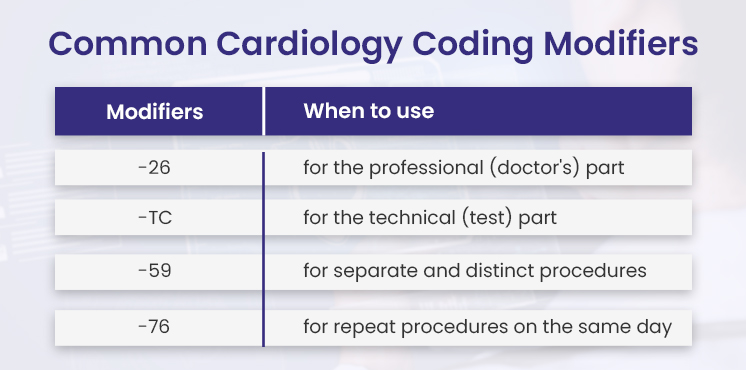
Quick Checklist for Easy and Accurate Cardiography Coding
Here is a quick checklist for you to follow. You’ll reduce billing mistakes, get paid faster, and make life easier for everyone in your cardiology practice.
✔️ Know What Test Was Done
First, understand if it’s a diagnostic, monitoring, or imaging test. Each one comes with different CPT/ICD codes.
✔️ Use the Right CPT Code
Double-check that you’re not using outdated codes. Refer to the AMA or coding software for updates.
✔️ Always Match CPT with the Right Diagnosis (ICD-10)
Avoid non-specific diagnosis codes. Use a diagnosis code (ICD-10) that clearly shows why the test was needed.
✔️ Don’t Forget Modifiers
Use modifiers like -26 (doctor’s part), -TC (test only), or -59 (separate service) when needed.
✔️ Watch for Bundled Services
Some tests are combined into one code. Use NCCI edits to prevent unintentional unbundling. Use modifier -59 only when services are truly distinct.
✔️ Check Insurance Rules
Every insurance plan is different, look up coverage rules before billing.
✔️ Document Everything Clearly
Ensure provider notes clearly explain what was done, why it was necessary, and who performed which part of the test.
Conclusion
Non-surgical heart tests may be simpler than surgical cardiography procedures, but coding them correctly requires the same focus. Also, knowing which non-surgical cardiography procedures are included in cardiology system coding is super important. Furthermore, these tests like ECGs, Echocardiograms, Stress tests, and Heart scans help doctors check heart health without any surgery.
Moreover, using the right CPT and ICD-10-PCS codes, checking the diagnosis, and adding the right modifiers can make a big difference in getting paid on time and avoiding rejections. Good coding helps patients, doctors, and cardiology billing teams all stay on track.
To sum up, when you know the right non-surgical heart tests and how to code them properly, you’ll avoid billing errors, reduce claim rejections, and make the whole process smoother for everyone.
